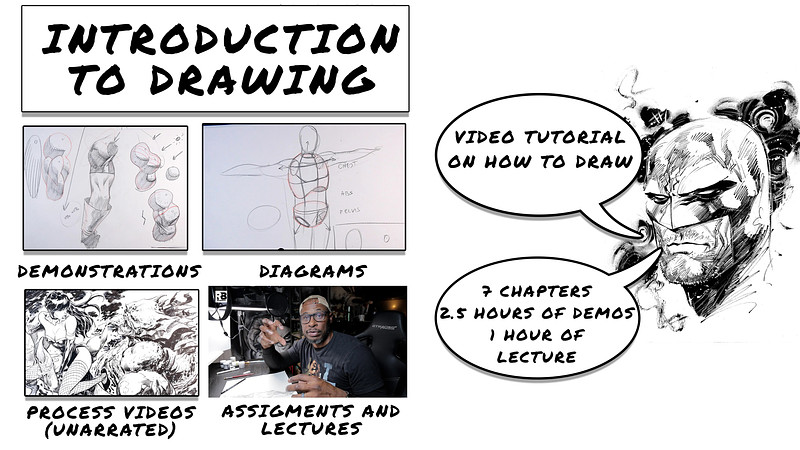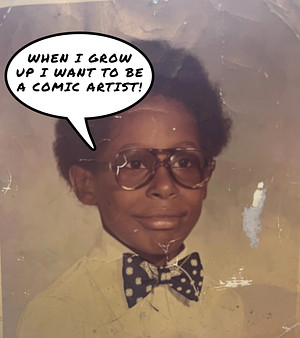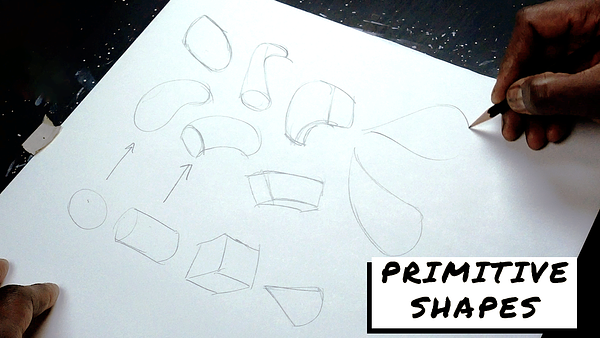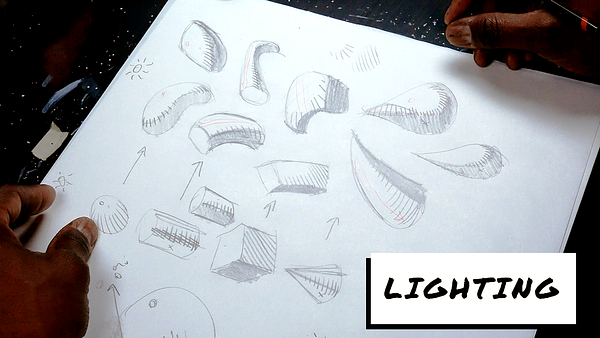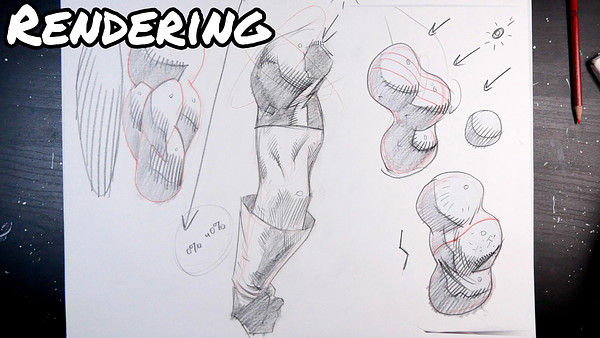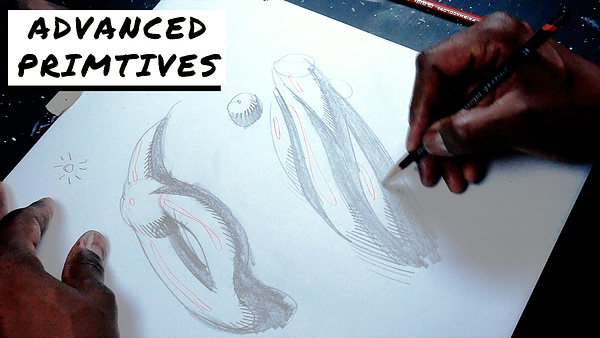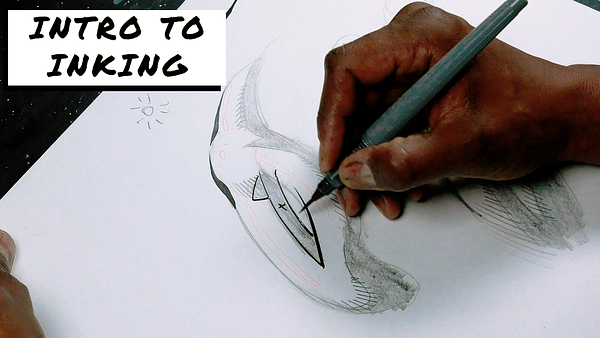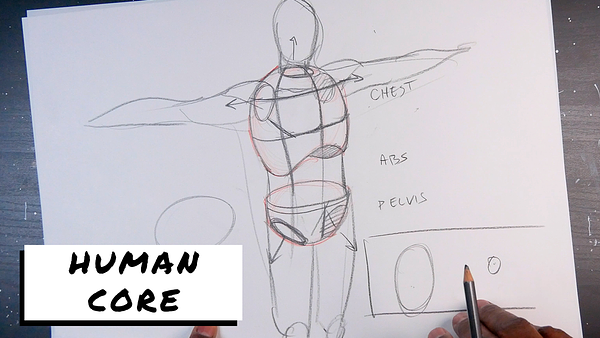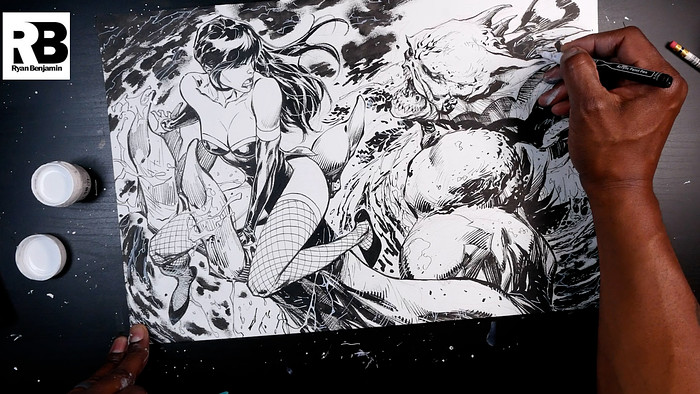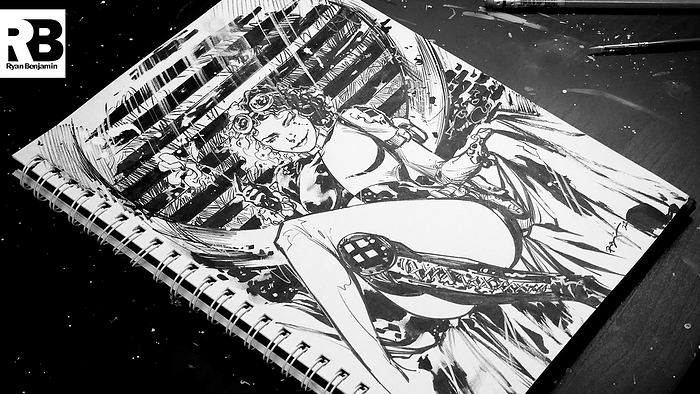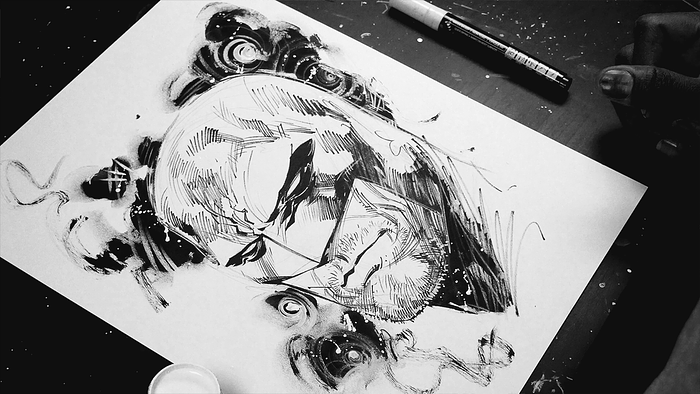Introduction to Drawing
December 4th
Who Am I?
I'm a professional artist who started my career in comics in 1994 with Image Comics, which later branched off to become Wildstorm Comics. I continue to work in the comic book industry with companies such as Marvel, DC Comics, DarkHorse, Acclaim, and Valiant Comics.
Top-Selling Comics I've Worked On
- Brothers Bond
- Wild Cats / Grifter
- X-Men
- Starwars
- Spawn
- Captain America
- Iron Man
- Grifter / Midnighter
- Batman
- Batman Beyond (#1 in NY Times)
- Wonder Woman
- and many more
I have twenty-eight-plus years in the industry and have expanded into the video game industry. A variety of my work as an artist/designer in video games can be seen in DC Universe (DCUO), Marvel MOBA games, & MLB: The Show. My work in television shows/movies includes ThunderCats, Ultimate Spiderman, Little Man, Pacific Rim, and Mech X4.
What You'll Learn
You'll learn the basic tools you need to get started drawing. None of this stuff requires expensive materials, or inherent talent.
These are the things I use every day in my work as a professional artist.
What To Expect
This isn't the definitive collection of everything you need to learn to draw. This is more of a sampler of the things I think are most fundamental to learning drawing. Treat this more like a book to refer to, rather than a replacement to an art education.
To get better, you're going to need to draw. This is here to help guide you on the process, or give you a refresher to some fundamentals.
Who is this for?
This is meant for beginners, and professionals alike. Whether you're just starting on your art journey, or just looking for a refresher I think this'll be useful to you.
Table of Contents
Chapter 1: Basic Primitive Shapes
Primitive shapes are the basic building blocks to drawing. Those include spheres, cubes, and cylinders. In this lesson, I explain how to draw them, and the basics of manipulating them to create more complex forms.
If you're just beginning your art journey, or you're a seasoned pro this is always a good thing to brush up on.
Chapter 2: Lighting
Being able to understand lighting, and how shadows work is one of the most important things to learn as an artist. In this lesson, I go through the fundamentals of how depict lighting an object and give some tips for rendering.
Lighting can be intimidating, but with these tools you'll be able to understand how it works!
Chapter 3: Line Quality
Line quality is often an overlooked skill by beginners. This lesson is all about correct line quality technique and exercises to improve.
This lesson includes an assignment with exercises for improving line quality.
Chapter 4: Rendering
Rendering is the thing that makes our drawing pop. In this lesson, I go through combining your primitive shapes to create more complex organic ones, some more lighting tips, filling in your shapes to read as 3d on the page, and basic hatching techniques.
This lesson is two parts:
Part 1 is creating blobs, then rendering them to read as anatomy.
Part 2 is using blobs to draw an arm from imagination.
This lesson includes an assignment with exercises on creating organic shapes.
Chapter 5: Advanced Primitive Shapes
The next step to basic primitive shapes is advanced primitives. These are the building blocks to creating complex anatomical shapes in your art.
Any shape can be combined with another, this lesson is all about how to correctly go about doing that, and making all the pieces fit together as a whole.
Chapter 6: Introduction to Inking
Inking is a method to make your drawings look finished and ready for print.
This lesson tackles applying ink on top of your pencils to make it readable. I got over the materials I use, line weight, and hatching with ink.
Chapter 7: The Human Core (Drawing People)
Drawing people is one of the most difficult things that artists have to learn. That's why it's essential to be able to break down the shapes in the figure into simple primitive shapes.
This lesson takes all of the previous drawing lessons and combines them to create a figure.
The Human Core is a strategy for drawing people that uses the torso as the base. The advantage of this is that it's easy to determine how the head and each limb extrude off the body because the torso can be used as a reference for proportion and acts as a guide for anatomy.
Chapter 8: Un-narrated Demonstrations
- Full Action Illustration (Part 1 free on Youtube)
- Single Character Illustration
- Ink Head Sketch
Along with this tutorial, you'll get a series of assignments to do along the way.
This is for everyone! This course is meant as an introduction to the skills that every artist uses daily. These are skills that I'm still practicing today, and will be practicing for the rest of my life.
You can use anything, these skills translate across all mediums. That being said, I use a Pentel Brush Pen, a 2B Pencil, a Prismacolor red pencil, and various other pens.
No, once you buy this, it's yours forever.
Yes! The lessons can be downloaded for viewing offline.
Absolutely! Just enter in the gift receivers email address at checkout.


